#1986 German Grand Prix
Text
Top 20 F1 races that are widely considered as some of the greatest of all time, based on their historical significance, drama, and excitement:
1. 1979 French Grand Prix - this race is famous for a memorable battle between Gilles Villeneuve and René Arnoux, who exchanged positions multiple times in a thrilling duel.
2. 1984 Monaco Grand Prix - regarded as one of the greatest drives in F1 history, Ayrton Senna drove a masterful race in wet conditions to secure his first Monaco win.
3. 1985 European Grand Prix - a dramatic race that saw Brazilian driver Ayrton Senna and French driver Alain Prost battling for the championship. Senna emerged victorious after a controversial collision with Prost.
4. 1986 Mexican Grand Prix - a classic race that saw Nigel Mansell in the Williams-Honda chasing down Ayrton Senna's Lotus-Honda in the closing laps, with Mansell setting the fastest lap on the final lap of the race.
5. 1987 British Grand Prix - a thrilling race that saw Nigel Mansell win his home Grand Prix in front of an ecstatic crowd after a tense battle with his teammate, Nelson Piquet.
6. 1991 Australian Grand Prix - a dramatic race that saw Ayrton Senna and Nigel Mansell battle for the championship in a rain-soaked racethat was eventually red-flagged due to weather conditions. Senna was declared the winner, securing his third championship.
7. 1993 European Grand Prix - a race remembered for Ayrton Senna's stunning opening lap, where he went from fifth to first in just a few corners in the rain.
8. 1994 Australian Grand Prix - a race that marked the end of the tragic 1994 season, which saw the deaths of Ayrton Senna and Roland Ratzenberger. Damon Hill won the race and the championship, becoming the first son of a world champion to win the title himself.
9. 1996 Monaco Grand Prix - a wet race that saw Olivier Panis score his first and only F1 victory after the leading cars of Michael Schumacher, Damon Hill, and Jean Alesi all retired.
10. 1998 Belgian Grand Prix - a chaotic race that saw a multi-car pile-up at the start and a dramatic last-lap collision between Michael Schumacher and David Coulthard, with Schumacher confronting Coulthard on the track after the incident.
11. 2000 Japanese Grand Prix - a title-deciding race that saw Michael Schumacher win his first championship with Ferrari after a tense battle with Mika Hakkinen.
12. 2003 Brazilian Grand Prix - a race that saw F1 legend Michael Schumacher and up-and-coming driver Kimi Raikkonen battle it out for the win ina thrilling race that went down to the wire.
13. 2005 Japanese Grand Prix - a race that saw Fernando Alonso secure his first championship in a dramatic race that saw multiple lead changes and a late-race charge from rival Kimi Raikkonen.
14. 2006 Brazilian Grand Prix - a race that marked the end of Michael Schumacher's career, with a tense battle between the German and Fernando Alonso for the championship. Alonso ultimately won the title, while Schumacher finished his F1 career with a podium finish.
15. 2008 Brazilian Grand Prix - a race that saw Lewis Hamilton secure his first championship in a dramatic final lap, passing Timo Glock in the closing stages to finish fifth and secure the title by a single point.
16. 2011 Canadian Grand Prix - a race that saw Jenson Button score a stunning victory after battling back from last place, with multiple safety car periods and a red flag adding to the drama.
17. 2012 Brazilian Grand Prix - a race that saw Sebastian Vettel secure his third championship in a tense battle with Fernando Alonso, with Vettel finishing sixth to secure the title by just three points.
18. 2014 Bahrain Grand Prix - a race that saw Lewis Hamilton and Nico Rosberg battle it out for the win in a thrilling wheel-to-wheel battle that went down to the wire, with Hamilton ultimately emerging as the victor.
19. 2016 Brazilian Grand Prix - a wet race that saw MaxVerstappen and Lewis Hamilton battle it out for the win in a dramatic race that saw multiple lead changes and a red flag period. Verstappen ultimately emerged as the victor.
20. 2019 German Grand Prix - a race that saw Max Verstappen secure a stunning victory in wet and treacherous conditions, with multiple drivers crashing out and a dramatic fight for the podium positions.
These races are considered among the greatest of all time due to their historical significance, the drama and excitement they provided, and the memorable moments and battles they produced. Each of these races had a unique story and left a lasting impression on F1 fans and the sport as a whole.
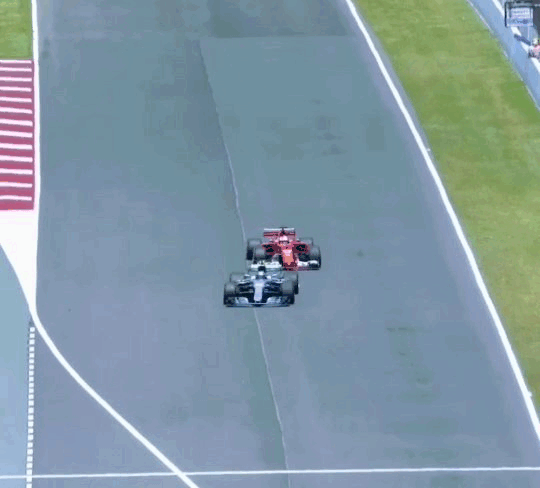
26 notes
·
View notes
Text
Need to know ahead of the Spanish Grand Prix
Need to know ahead of the Spanish Grand Prix
By Balazs Szabo on 04 Jun 2023, 08:00
Following a nail-biting qualifying session that saw the rise of Max Verstappen and the fall of the likes of Charles Leclerc, George Russell and Sergio Perez, the field is getting ready to compete at today's Spanish Grand Prix at the Circuit de Barcelona-Catalunya. F1technical.net's Balázs Szabó reveals what to know ahead of Round 7 of the 2023 F1 season.
Long history – The Circuit de Barcelona-Catalunya is one of the longest serving venues on the Formula 1 calendar, having held the Spanish Grand Prix every year without interruption since it was opened in 1991.
Today’s Spanish Grand Prix will mark the 53rd time that a Formula One race takes place in Spain. The event first appeared on the calendar in 1951, and has been held at five venues.
The 1951 and 1954 races took place at Barcelona on the Pedralbes street circuit before the race moved to Madrid where the Circuito del Jarama hosted the race between 1968 and 1981.
The third venue was Barcelona’s Montjuic Park, playing host to the event in 1969, 1971, 1973 and 1975. The Spanish Grand Prix had a short stint at Jerez between 1986 and 1990 before moving to the Circuit de Catalunya in the following year.
Stewards – Garry Connelly, Felix Holter, Derek Warwick, and David Domingo will form the group of FIA stewards at today’s Spanish Grand Prix.
The most successful team – Scuderia Ferrari is the most successful constructor at the Spanish Grand Prix with 12 victories. However, the Italian team recorded its most recent triumph long ago, back in 2013 when Fernando Alonso took a popular home win.
McLaren is the second most successful outfit with eight victories with Mercedes being the third most successful thanks to their seven triumphs in the history of the Spanish Grand Prix.
Average length – The Circuit de Bacelona-Catalunya features a layout that has a length of 4657m. The start line-finish line offset is 126m. Drivers will need to rack up a total of 66 laps at today’s Spanish Grand Prix, which is equivalent to 307.237km.
Pit lane – Drivers will need to adhere to a speed limit of 80 km/h in the pit lane.
Schumacher and Hamilton – The German and the Briton are the most successful drivers at the Spanish Grand Prix with six victories each. Schumacher first won in 1995 with Benetton, followed by five victories for Ferrari (1996, 2001, 2002, 2003, 2004).
Hamilton won here in 2014 for the first time, and was unstoppable in the years between 2017 and 2021.
Two DRS zones – As in the previous years, two DRS zones will be in use. The first has a detection point 86m before Turn 9 and an activation point 40m after. The second detection point is at the Safety Car line, with activation 57m after Turn 16.
Modifications – The track has been updated since the field last visited the venue last May. The most significant change is that the track reverts to the previous layout that results in the removal of the final chicane. Instead, cars will take the faster route, rushing through the extremely fast second-to-last corner.
Two-stop strategy - For today’s 66-lap Barcelona round, Pirelli expects a two-stopper. This is down to the relatively high levels of tyre wear and degradation seen at the Barcelona circuit, with its abrasive asphalt and high-energy corners. Another reason is the fact that not so much time is lost in the pits, which makes a two-stopper much more viable, as well as the fact that the hard tyre is slower here.
via F1Technical.net . Motorsport news https://www.f1technical.net/news/
2 notes
·
View notes
Text
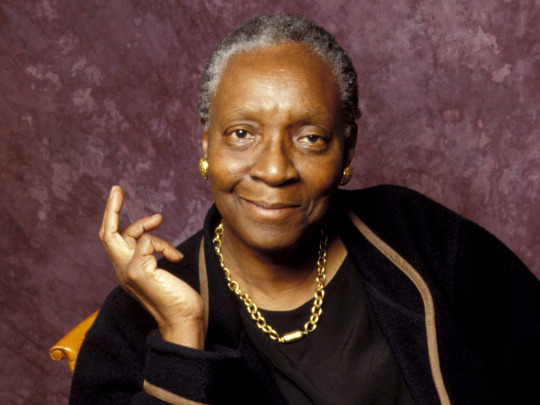
Maryse Conde, Novelist
(1934 - 2024)
Condé's novels explore the African diaspora that resulted from slavery and colonialism in the Caribbean. Her novels, written in French, have been translated into English, German, Dutch, Italian, Spanish, Portuguese, and Japanese. She won various awards, such as the Grand Prix Littéraire de la Femme (1986), Prix de l’Académie française (1988), Prix Carbet de la Caraïbe (1997) and the New Academy Prize in Literature (2018) for her works. She was considered a strong contender for the Nobel Prize in Literature.
Ms. Conde passed away on April 2nd. She was 90 years old.
Read More
1 note
·
View note
Text
Jusup Wilkosz 💪💪💪
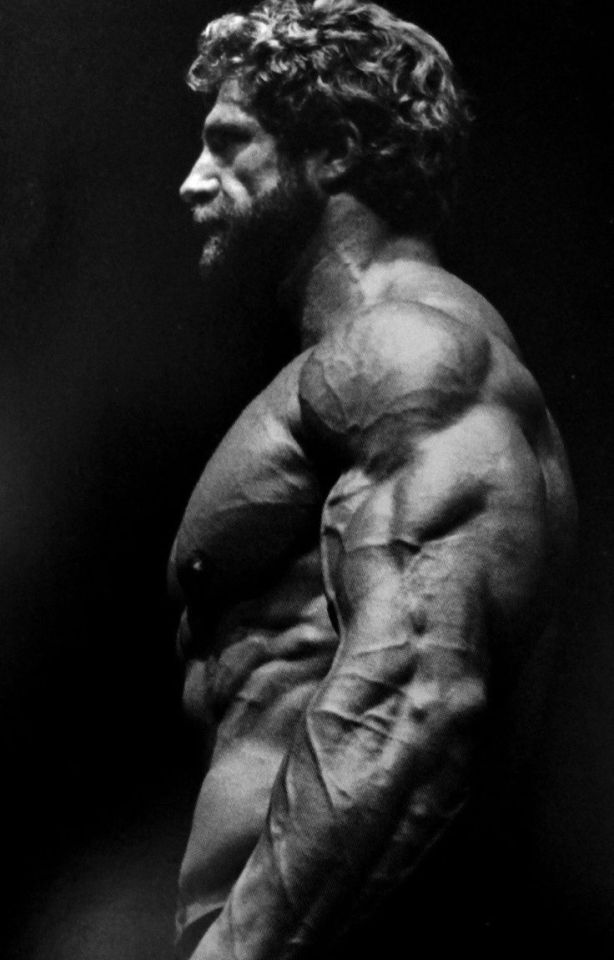
(Via: pinterest.it)
Titles:
1979 German Bodybuilding Championships - 1st
1979 World Amateur Championships - 1st
1979 IFBB Mr. Universe - 1st
1980 IFBB Pro Mr. Universe - 1st
1981 Mr. Olympia - 6th
1982 Mr. Olympia - 10th
1983 Mr. Olympia - 6th
1983 Grand Prix Switzerland - 4th
1983 Grand Prix Sweden - 3rd
1983 Grand Prix World - 3rd
1984 Mr. Olympia - 3rd
1986 Mr. Olympia - 12th
#fitblr#fitness motivation#fitnessmodel#health and fitness#fitness#jusup wilcosz#amazing body#great body#bodybuilder#female bodybuilding#bodybuilding#gymmotivation#gym body#gymspiration#gymaholic#gymlife#gym#flexing#pecs#muscle#big arms#biceps#delts#muscolar#flex#big pecs#big biceps#shredded#huge arms#muscles
1 note
·
View note
Text
Amarra o valente

AMARRA O VALENTE SOFTWARE
AMARRA O VALENTE SERIES
AMARRA O VALENTE TV
AMARRA O VALENTE WINDOWS
Studio Master: DSD (Direct-Stream Digital)
AMARRA O VALENTE SOFTWARE
Supported by Apple OS with software player from Amarra, Audirvana, PureMusic).
For users, using Apple/iTunes and a few Network Streaming players.
Studio Master: ALAC (Apple Lossless Audio Coding)
Supported by Apple OS with software player from Amarra, Audirvana, PureMusic, Songbird.
AMARRA O VALENTE WINDOWS
Supported by Windows with software player from Media Monkey, JRiver, JPLAY).Widely compatible with Network Streaming players and D/A Converter's (DAC).Studio Master: FLAC (Free Lossless Audio Codec) HighRes-Studio Master files are lossless at various sample rates from 44.1 kHz up to 384 kHz or 1-bit (2.8224 MHz) for DSD.
AMARRA O VALENTE TV
On January the 14th 2006 Caterina will celebrate her 75th birthday and to the dismay of major European TV-stations and the print media, she has expressed the whish to keep this occasion absolutely private!īut with the publication of the never before released unedited-concert recording used for the famous Heidelberg TV Special including the restored video on DVD of the same special which premiered on CBS in 1969, fans and friends all over the world will once again be spellbound by the magic of this great entertainer! “Girltalk” her latest album of newly recorded material with harpist Catherine Michel was released to international critical acclaim in 2001. In 1986, her 50th anniversary in showbusiness was celebrated with a televised tribute entitled Bravo Caterina, and the Guiness Book of World Records recognized her as Europe’s most successful female recording artist, with over 1350 albums to her credit. Major awards from Italy, Germany (2 crosses of merit), France (officer of artistic education), Brazil, Japan as well as the USA (including a best female vocalist Grammy nomination) document her artistic and civil achievements throughout the years.īut she considers the 18 concerts sharing the stage of the Olympia in Paris with Michel Legrand in 1972 as well as the album VALENTE 86 with the Count Basie Orchestra and relative 1986 European Tour under the direction of, and with arrangements by Thad Jones, to be her artistic highlights. She starred in 12 European movie-musicals she dances (less exuberantly since undergoing two major hip operations) and is a virtuoso on the guitar, having strummed the instrument in an orchestra when only a teen-ager. The Grand Prix du Disque was her award in France for “Bimbombey” and she topped the charts in the US and the UK with the before mentioned “Malaguena” and “The Breeze and I”. In Italy romantic ballads like “Nessuno al mondo” and “Till” brought he gold records. She stormed the charts in Germany with “Ganz Paris träumt von der Liebe” and Tipitipitipso” becoming the queen of German Schlager.
AMARRA O VALENTE SERIES
In “The Entertainers” aired in 1964/65 she shared the bill with Carol Burnett, Dom DeLuise and Bob Newhart and was awarded the FAME Award as best vocalist on American television.įrom the mid fifties to the eighties German, Italian, Swiss and Austrian Television produced more than a dozen series of Valente-Shows and her guest spots over the globe are uncountable.Īmong others, she has performed with Louis Armstrong, Benny Goodman, Ella Fitzgerald, toured extensively in concert with Woody Herman, the Tommy Dorsey Orchestra, Buddy Rich and has recorded with Sy Oliver, Claus Ogerman and Chet Baker just to name a few.īorn in Paris of Italian parents, once married to a German then to an Englishman Caterina Valente easily related to fans wherever she performed, particularly in Europe. Danny Kaye, Perry Como and Bing Crosby often featured her as well, along with other TV hosts. Las Vegas critics raved about the extraordinary talent of the young European vocalist who could sing in 12 languages and she soon found the spotlight on TV, at the Hollywood Palace and Dean Martin was so impressed he invited her on his TV show at least a dozen times. This was followed by the worldwide hit “The Breeze and I”. In 1955 Gordon MacRea presented her on the “Colgate Comedy Hour” as the “Malaguena” Girl. In 1954 Caterina Valente introduced herself to European audiences with her recordings of “Istanbul” and “I love Paris”. “A VOCAL SUPERSTAR IN ANY LANGUAGE!” The Los Angeles Times said it, and who are we to argue? Her conception, phrasing, and timbre are exceptional.” -Leonard Feather: The Encyclopedia of Jazz Is more a jazz singer than many artists so identified in the U.S.

0 notes
Text

Top 10 Moments of Elio de Angelis Brilliance
aka fine I’ll do it myself because f1.com clearly isn’t going to do a tribute video anytime soon
Suave, charming and super-fast, Elio de Angelis was one of the best drivers of the 1980s. He was able to challenge for poles, podiums and wins against some of the top names of the era; Mansell, Senna, Prost, Rosberg, and Lauda amongst others. Known as ‘the last gentleman’ in grand prix racing, he came from a wealthy Roman family but soon proved he was no pay-driver, with some fantastic performances for the Shadow and Lotus teams. He only competed in 8 seasons of F1 before his career, and life, was tragically cut short in a testing accident in 1986. He was a driver who on his day could outpace Ayrton Senna - who knows what he could have gone on to achieve…
~~~

10. Recovery drive | Imola, 1980
Elio’s first season driving for the Lotus team didn’t go smoothly, with the car mostly competing in the midfield. At his home grand prix in Imola, he could only qualify a disappointing eighteenth, almost a second behind his teammate Mario Andretti in tenth. He stormed through the field on race-day, however, driving a measured and intelligent race as chaos, crashes and retirements unfolded around him. He would eventually finish tantalizingly close to a podium, in fourth place.

9. Pole and podium | Brazil, 1984
Elio started the 1984 season with a bang, taking his second pole position at the opening race in Brazil. He was half a second quicker than anyone else, and almost a full second ahead of teammate Nigel Mansell in fifth. Although his Lotus was ultimately outpaced in the race, by winner Alain Prost and a hard charging Keke Rosberg, Elio was still able to finish on the podium in third. It was only the third time he had scored a podium in his F1 career.
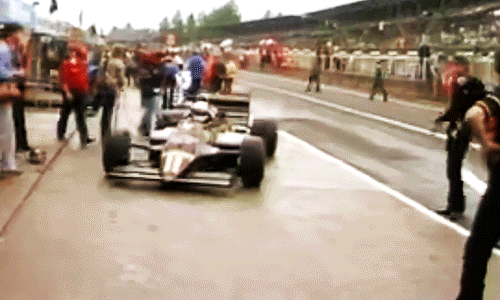
8. Maiden pole position | Brands Hatch, 1983
Elio endured a difficult 1983 season, with the Lotus team reeling after the sudden death of Colin Chapman at the end of 1982, and struggling with their new turbo engines. He retired with mechanical problems eleven times in the first twelve races. The car finally came good at the end of the season, with Elio finishing fifth in Monza, and then taking a superb pole position at Brands Hatch, the first of his career. Sadly he didn’t finish the race, after a car problem on the twelfth lap, but teammate Nigel Mansell managed to finish on the podium to show the team’s improved performance.

7. Kyalami recital | South Africa, 1982
One of Elio’s best-loved performances was not in a race car at all! During the 1982 driver’s strike, almost the entire grid barricaded themselves in a hotel room to demand changes to new superlicence regulations. To keep everyone entertained overnight, several drivers put on a show, with Gilles Villeneuve playing ragtime music, and Bruno Giacomelli supposedly making detailed diagrams of an AK-47 machine gun. Elio topped them all, however. He was a classically trained pianist and performed a few Mozart pieces that left the room stunned. Keke Rosberg said “Elio was a close friend of mine, so I knew he could play the piano. But no-one knew he could play like that…”, while Nigel Mansell later said he would “never forget… Elio’s beautiful piano playing”. (Sadly there’s no photos or footage of this – the gif is from a 1985 performance on German TV).

6. Best of the rest | 1984
Lotus built a very competitive car for 1984 and Elio put it to good use, taking four podiums and consistently finishing in the points in eleven of sixteen races (and retiring only because of mechanical failures in the others). He finished a fantastic third in the championship, his best ever result, only behind the dominant McLarens of Prost and Lauda.
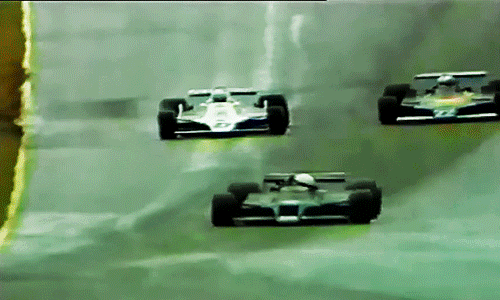
5. Breakthrough drive | Watkins Glen, 1979
Elio had a difficult rookie season with the struggling Shadow team, retiring seven times and finishing outside the points six times, and even failing to qualify for Monaco. But his disappointment ended at the final round of the season in the torrential rain of Watkins Glen. He started only 20th on the grid, but drove a fantastic race to finish fourth, keeping calm as more experienced drivers crashed out in the challenging conditions. It was the only points finish for Shadow all year, and an eye-catching result for Colin Chapman, who was impressed enough to offer the Italian a test-drive for Lotus…
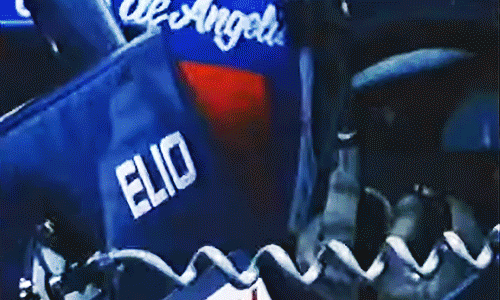
4. Youngest podium finisher | Brazil, 1980
Elio took the first of his nine podium finishes in only his second race for the Lotus team, after an unexpectedly quick drive to finish second behind winner Rene Arnoux at the gruelling Interlagos track. At the time, de Angelis was aged just 21, and he broke Bruce McLaren’s record for being the youngest ever driver to finish on a podium. His record would stand for another 17 years.
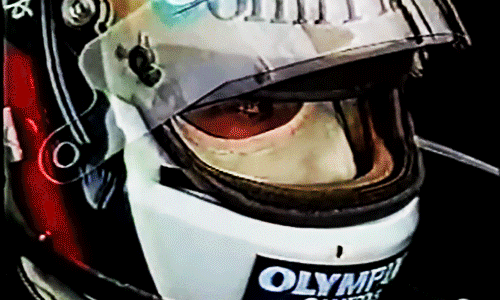
3. Sensational pole | Canada, 1985
It’s not often that a driver can say they beat arguably the best qualifier of all time, but Elio managed to do it a couple of times in 1985. Lotus had changed its driver line-up, bringing in the rookie sensation of 1984, Ayrton Senna, to replace Nigel Mansell. Senna quickly became the focus of the team and was given more car updates and testing time, despite Elio leading the championship at the beginning of the season. At the Canadian Grand Prix, however, Elio took his final pole position, outqualifying Senna by three tenths. Allegedly Senna entered into ‘heated discussions’ with the Lotus engineers afterwards. Meanwhile, Elio relaxed in the paddock with his girlfriend…
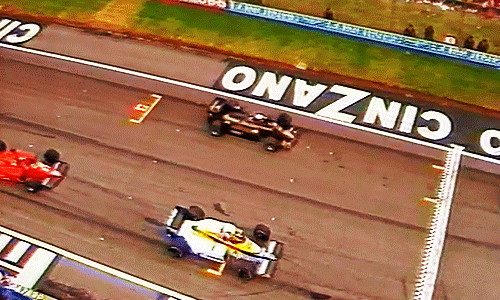
2. Last man standing | Imola, 1985
The 1985 San Marino grand prix was infamously a race of attrition, with only six finishers and thirteen retirements. Five cars ran out of fuel in the last couple of laps, including race leaders Ayrton Senna and Stefan Johannson. Elio finished second behind Alain Prost, but after the race Prost’s McLaren was found to be underweight (with not enough fuel!) and he was disqualified, handing Elio his second career win. Far from being an inherited victory, Elio was the only driver who was able to drive to the constraints of the new fuel limit rules. He drove a conservative but still quick strategy to make it to the end of the race, and take the rewards.

1. On the line | Austria, 1982
At the time, it was the second closest race finish in F1 history. It was the last time Colin Chapman would throw his hat in the air to celebrate a Lotus victory. And it was Elio’s first, magnificent win. He started seventh and spent much of the race in the top six, steadily moving up as drivers retired ahead of him. He was running in second with five laps to go, when Alain Prost retired from the lead. That left Elio in first, but he had to contend with Keke Rosberg’s rapidly closing Williams. Neither driver had won a race at that point and it was clear they both wanted it badly. They were nose-to-tail on the last lap, with Elio positioning his car brilliantly to defend. He slid wide going into the last corner but was able to get the power down and finish just 0.05 seconds ahead of Rosberg at the line. Elio was even gracious enough to apologise to Keke on the podium (although the Finn reportedly laughed and said “don’t be f*cking sorry!”)
~~~
Bonus entry!

Black flag | Silverstone, 1981
Elio got black flagged and had a meltdown and it’s never not funny to me look at him go
124 notes
·
View notes
Text
The Legacy of Michael Schumacher in Formula One
When a young German driver made his Formula One debut at the Belgium Grand Prix in 1991 as a replacement driver for the Irish Jordan-Ford team, little did the paddock around him know the lasting impact that he would have on the sport. When he made his debut in the sport which he would eventually become synonymous with, Michael Schumacher was a relatively unknown driver but he made himself known quickly by qualifying seventh, already matching the team's second highest qualifying performance of the season. Schumacher was then quickly signed by Benetton for the rest of the 1991 season and he would win his first and second drivers' titles consecutively in 1994 and 1995 with the team, before moving to a struggling Ferrari team and returning them to the glory days they had dreamed of since the '70's, when he achieved the momentous five in a row and become the first seven time world champion.
Thirty years on from Schumacher's debut, Max Verstappen has become the first World Champion not to have raced against the great German driver since Niki Lauda.
Lauda, won his third and final World Championship in 1984 and retired from racing in F1 in 1985, was followed by Alan Prost (who won the championship in 1985, 1986 & 1989, and then again in 1993), Nelson Piquet (who won his third and final title in 1987), Aryton Senna (the legendary Brazilian won his three world titles in 1988, 1990 & 1991, respectively), Nigel Mansell (who won his world title in 1992), Damon Hill (who clenched the title in 1996), Jacques Villeneuve (the World Champion of 1997), Mika Häkkinen (who won his two world titles in 1998 & 1999), Fernando Alonso (who claimed the title in 2005 & 2006, respectively), Kimi Räikkönen (who, in 2007, became the first - and so far the only - Ferrari driver since Michael himself to claim the title), Lewis Hamilton (the only other driver to achieve seven world titles, winning in 2008, 2014, 2015, 2017, 2018, 2019 & 2020, respectively), Jensen Button (who achieved the title in 2009), Sebastian Vettel (who became the youngest World Champion when he first won in 2010, he therefore is also the youngest driver to achieve four world championships in row as he also won the title again in 2011, 2012 & 2013, respectively) & Nico Rosberg (who achieved his championship in 2016) who all raced against Michael Schumacher at least once during his years in F1 (between 1991 & 2006 and then from 2010 to 2012).
Max's win makes him the first Dutch driver to get his hands on the trophy but the Dutchman's wins is reflective of something more. We are at the dawn of a new era in Formula One. A new generation of drivers are coming to the forefront of the sport, drivers like Alex Albon (who's rejoining the grid with Williams after a year's absence), Pierre Gasly (Alpha Tauri), Charles Leclerc (Ferrari), Lando Norris (Maclaren), Esteban Ocon (Alpine), George Russell (who's moving from Williams to Mercedes in the new year), Yuki Tsunoda (Alpha Tauri) & Guanyu Zhou (who is making his Formula One debut at Alfa Romeo in the new year and is also the first Chinese driver in Formula One's history). Majority of these drivers grew up competing with each other in karting, formula 3, formula 2, etc, and most importantly were all inspired by the legendary German driver.
It's mad to think that 37 years worth of champions all raced with Michael but it's also mad to think the first driver not to have raced against Michael in Formula One has photos like these with the - arguably - greatest formula 1 driver of all time:


There's interviews with Michael & Max's father from the early 2000's where they talk about their kids & if they could see them in f1 (in one such interview, Michael jokes that they have never had any sort of argument in their friendship but this could be the first if "our two" would be racing each other & Jos remarked that they're similar ages (Max is only 2 years older than Mick) so they would probably compete against each other if they decide to go into racing as they grow up, which they've both have now. It's fitting perhaps, that this year, the year Max has become World Champion, Mick is on the grid beside him. In the same interview, Michael added laughing that he thinks horse riding is a much better sport for their kids, which his oldest child Gina does now almost 20 years later.
Some may claim this is the passing of the torch, but I will always argue that Michael already passed the torch in his final race, to his friend and fellow German driver Sebastian Vettel. While Vettel had already clenched the decisive grid position to guarantee he'd have the points to become a world champion once again, Schumacher allowed Vettel to overtake him without any defense and simply waved him through, essentially changing the guard, passing the torch from era of drivers to the next. While Sebastian's story is still being written to this day, Michael's time in F1 drew to a close as he watched the kingdom lights shine on his friend, who he had known as a child, become not only a four time world champion but the youngest four time champion in history. Drivers like Prost, Piquet, Mansell and the legendary Senna, are all connected to Sebastian - and thus the rest of his era and those who followed them into the sport - by Michael. The torch still burns bright.
This is, however, a poignant moment to reflect. Michael remains the only driver to achieve five championships in a row (Juan Manuel Fangio being the only other driver to achieve five world championships, outside of the two seven time world champions; Hamilton & Schumacher), a record he retains for the foreseeable future. He also still holds the record of most fastest laps (77) and still shares the record of seven World titles with Lewis Hamilton. Hamilton, Vettel and Alonso are all signed for at least another year in Formula One and can/will contend for future world titles but the door has been opened for the younger drivers to breakthrough. Today belongs to Max, those young drivers and the legacy of one German driver who debuted thirty years ago.
Said German driver's greatest legacy is still being written. His son has been unanimously praised during his rookie season in the sport, his hard work and dedication reminiscent of his father's. Little did he know when he was giving that interview that his son would follow in his footsteps or that his friend's son would be the first world champion in 37 years not to have raced against him but perhaps it was clear to him even then that his greatest legacy would be firmly written by his son and daughter.
Edit; Bonus Photos I didn't have prior to posting:
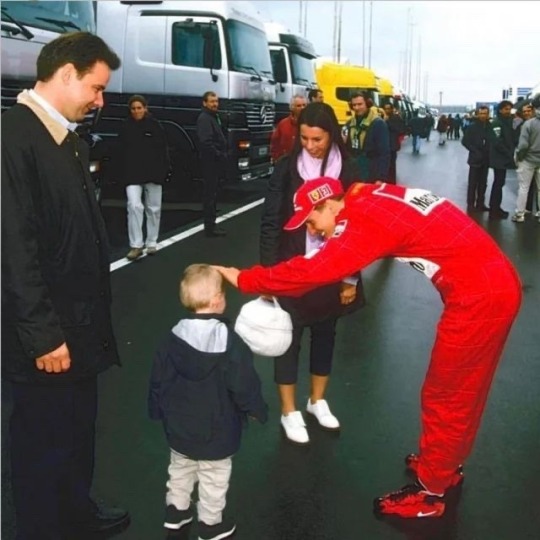

Bonus Bonus Photo:

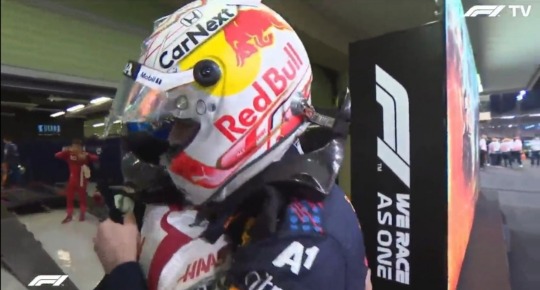
Bonus Bonus Bonus, what Niki Lauda, the last champion who never raced against Michael had to say about Max;

Bonus x4:

#formula 1#f1#max verstappen#mick schumacher#sebastian vettel#charles leclerc#fernando alonso#yuki tsunoda#checo perez#daniel ricciardo#michael schumacher#sergio perez#george russell#nicolas latifi#niki lauda#alex albon#pierre gasly#esteban ocon#kimi räikkönen#kimi raikkonen#guanyu zhou#lando norris#gina schumacher
299 notes
·
View notes
Text
Teams intro for The Edge Of Control (Part 2)
Wow, these bios are getting really hard to cut down! Hope you don't mind the extra detail!
CONSTRUCTORS OF THE 2021 FORMULA ONE WORLD CHAMPIONSHIP:
(in 2020 championship finishing order, continued)
6. MacNeil Racing
First Grand Prix: 2015
Based in: Richmond, Virginia, United States
Team Principal: Carter Serrano (American)
Drivers:
#9 Freya Larsen (DEN)
#89 Dimitri Rybakov (RUS)
MacNeil Racing, F1’s newest team, is the first American constructor since Corsair Racing's controversial bankruptcy at the end of the tragic 2000 season. Debuting at the 2015 Australian Grand Prix, MacNeil surprised the F1 establishment when French lead driver Renard Clement finished sixth, making MacNeil the first team to score points on debut since 2002.
Clement would record solid finishes in the midfield, while his teammate Claudia Guerreiro remained at the back of the grid and recorded a single point all year with 10th in Germany. She was replaced by Danish driver Freya Larsen, and the team was a solid midfield fixture in 2016 and 2017. However, it was the 2018 season where the team found its feet: powered by the Rossolini engine that had won the 2017 championship, MacNeil were at the front of the midfield. Larsen scored the team’s highest-ever qualifying position with fifth on the grid in Austria; she drove brilliantly in the wet race conditions to secure the team’s highest-ever race finish with P4. The team finished the Constructors’ Championship in a phenomenal fifth place, with 117 points.
However, the team has declined severely in recent years, with many rumours of money troubles. 2019 saw the team score just 31 points; in a dismal 2020, that was down to seven. Renard Clement retired from F1 at the end of the 2020 season, leaving Larsen without her mentor and long-time teammate. MacNeil have hired Russian rookie and pay-driver Dimitri Rybakov to replace Clement for the 2021 season. Rybakov was appointed a seat alongside Larsen on the basis that his father’s oil company will secure the team the funding it needs to return to the midfield. However, Rybakov is rude, lecherous and has been observed assaulting fellow drivers after collisions in the junior formulas. Will Larsen keep her cool to ensure success for MacNeil this year, or will the volatile driver pairing bring the team to the point of collapse?
Author's notes: Yeah, this is basically Haas. The car may be grey and black instead of white and black, but it's pretty much the same team. Freya Larsen is based on one of my favourite F1 drivers - Kevin Magnussen - and becomes a fairly major character in TEOC. Dimitri Rybakov is based on 2021 driver Nikita Mazepin, and is also a fairly major character - for all the wrong reasons.

7. Scuderia Capelli
First Grand Prix: 1986
Based in: Misano, Italy
Team Principal: Walter Chemmel (German)
Drivers:
#15 Nobuharu Koyamada (JPN)
#73 Cooper Wright (NZL)
Scuderia Capelli was founded in 1986 by dealership owner Leonzio Capelli and his brother Matteo. The Capelli family had sponsored teams and drivers in lower formula across Europe for nearly thirty years, and the two brothers decided to enter Formula One.
Despite the Capellis' best efforts, the team remained perennial backmarkers in Formula One, operating on old and outdated hardware with a shoestring budget. Between 1994 and 1999, the team scored just five points. By the end of 2001, Scuderia Capelli had not scored a single point in two years, and were nearing financial collapse.
Investor and owner of the Europcar Formula 3000 team, Australian Anthony Barton, purchased a controlling share in the team in early 2002. Barton was famous in the paddock for his unwavering belief in the team: he could always be found haggling with sponsors or promising drivers that the disappearing sponsor logos ‘made the car look better anyway’. Sadly, after the 2005 season Barton was forced to sell the team to prevent bankruptcy, with new constructor Riedel Rennsport using the team to test drivers from its youth academy into Formula One. The team was originally going to be renamed Riedel Academy Racing: however, a petition by Scuderia Capelli fans and an impassioned plea from the last surviving Capelli brother, Matteo, persuaded Riedel to keep the Capelli name.
Scuderia Capelli continued under this new arrangement, and while the team never really challenged for podiums or wins, the increased funding and pool of young talents from the Riedel driver academy saw the team score regular points, and establish a presence in the lower midfield. With a reputation for brutally discarding prospective drivers’ careers, Scuderia Capelli has nevertheless nurtured some of Formula 1’s best contemporary talents, such as Daniel Albrecht, Alan Worrall and Nicolas Theunis, and hopes are high that the team’s all-rookie line-up for 2021 will impress. Nobuharu Koyamada joins fresh from his impressive runner-up season in Formula 2, while Cooper Wright, the youngest driver on the grid at just 19 years old, joins from a successful fourth-place rookie campaign, also in Formula 2.
Author's notes: Scuderia Capelli are based on several privateer or 'backmarker' teams, but most obviously Minardi F1 (1985-2005). The takeover by Riedel mirrors the real-life takeover of Minardi by Red Bull and rebranding to Toro Rosso, except they got to keep the name :). The livery is the same blue, silver and red as Toro Rosso's 2017-19 F1 liveries. Nobuharu Koyamada is based on 2021 F1 driver Yuki Tsunoda, while Cooper Wright is the novel's MC and POV original character.

8. Verrazano Racing
First Grand Prix: 1995
Based in: Basel, Switzerland
Team Principal: Janna Holm (Swedish)
Drivers:
#48 Callista Fontecchio (ITA)
#25 Heidi Leitner (FIN)
Verrazano are one of Formula One’s longest-standing privateer teams, with a large following due to their underdog status. After the company was founded in 1970 and enjoyed major success in endurance racing, team owner Florian Verrazano set his sights on competing in Formula One.
The team recorded a slow but steady stream of points in their early seasons, gaining a reputation for being a solid outfit in the lower midfield. In 1999, the team started to use Rossolini-designed engines and chassis, and enjoyed an increase in performance, even appearing on the podium a few times. The team's best spell occurred in the late 2000s under the backing of German car company Eberhardt - their powerful engines allowed Verrazano to record their only two wins in 2008.
After Eberhardt pulled out of F1 due to the global financial crisis, Verrazano were forced to scrape cash together, rarely finishing in the points at all. The team has gradually built a foundation beneath themselves, with a consistent all-female driver line-up of Italian Callista Fontecchio and F1's only female world champion, Austrian Heidi Leitner. Leitner is 42 years old this year, and looks to be leaving the sport at the end of the season. Will her retirement bring down Verrazano's rebuilt house of cards?
Author's notes: Verrazano are primarily based on famous F1 privateers Sauber, without the Alfa Romeo ownership, although Sauber do retain Alfa Romeo's red white and black livery. Eberhardt is meant to represent the BMW Sauber era. Callista Fontecchio (retyping that name will be a pain) is an original character with a passing resemblance to former Alfa driver Antonio Giovinazzi, while Heidi Leitner is pretty much fully original.
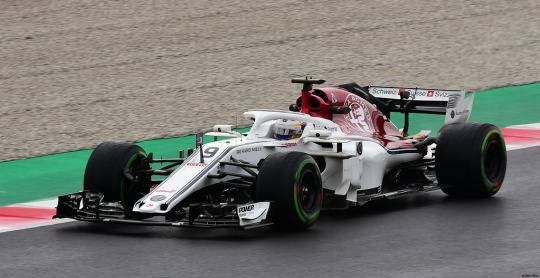
9. Woodford Grand Prix
First Grand Prix: 1971
Based in: Harwell, England
Team Principal: Amelia-Rose Woodford (British)
Woodford is a popular and well-respected name in Formula One, celebrating their fiftieth anniversary this year. A proudly family-owned venture, the Woodford team was managed first by Jeremy Woodford, then his son Richard, before granddaughter Amelia-Rose took over in 2011 as the youngest-ever principal in F1 and the only female team principal on the current grid. Operating out of their base in the south of England, Woodford’s facilities are rather lower-funded and modest than those of other F1 teams, which belies the team’s intensely successful history.
After spending the early 1970s as a privateer self-funded outfit struggling for race finishes, the close-knit Woodford team's work finally bore fruit almost overnight, winning their first race in 1979 and their first world title the year after with Australian driver Graham Vinson. Woodford went on to dominate F1 in the late 1990s, but their run of seven Constructors' and six Drivers' championships ended with Venezuelan driver Lisandro Cruz in 2003.
The legendary British outfit's last win was with Japanese driver Keiji Matsude in Belgium 2005; since then, a string of poor engines and poorer finances started a decline to the back of the grid. The team plummeted to dead last in the 2018 standings, and were forced to take on pay drivers to stay afloat. This decline worsened, and the 2020 season was the team’s first season where no points were scored at all during the year. Pay-driver Natasha Talley and aggressive, hot-headed yet talented rookie Matthew King, the reigning Formula 2 champion, could hold the key to the team’s prayers. Maybe they'll win just enough championship points to keep the team afloat.
Author's notes: Woodford are based on several classic privateer British teams, such as Tyrrell, Williams and Arrows. The team's family-run approach is similar to Williams, with a similar 'Martini' white, blue and red livery. Natasha Talley is a original character, whereas Matthew King is loosely based on current Formula E driver Daniel Ticktum.

10. Lancaster F1 Team
First Grand Prix: N/A (team bought out end of 2020: started in 1991 as Norton F1)
Based in: Cheltenham, England
Team Principal: Marcos Garcia Ortiz (Spanish)
Drivers:
#45 Ryan Stone Jr. (CAN)
#60 Evangeline Fuentes (POR)
Lancaster is a storied name in the motoring world, carrying more than a century of racing pedigree. However, they have never ventured into Formula One, preferring instead to race in endurance championships, grand tourers, and other forms of road car-derived racing. American telecoms entrepreneur Patrick Callaghan, owner of the financially struggling Pinnacle Motorsport team, sold title shares in the team to Lancaster.
Pinnacle Motorsport was originally started by Scottish businessman Peter ‘Tricky Pete’ Norton, who had run several successful teams under the Norton banner in lower formulae. Originally competing under the name 'Team Norton F1' in the early 1990s, Norton were solidly rooted in the midfield, bringing an air of unprofessionalism, casualness and often comedy to the circuit, with Pete Norton 'unable to stop fucking with people who didn't immediately beat the shit out of him.'
In 1999, Austrian driver Christian Spiedel completed perhaps the greatest underdog story in F1 history. Maligned as nothing more than a number two driver after stints in several top teams, the Austrian driver took the uncompetitive Norton to three Grand Prix wins. In perhaps the most sensational season finale ever at a torrential 1999 Malaysian Grand Prix, Spiedel spun his car just before the finish line, and reversed over it to win the race - and the drivers’ world championship - by just two seconds.
Sadly, Norton's bad business sense and inability to turn up to races with his teeth intact sunk the team, and Norton F1 were bankrupt by 2004. The team changed hands to Dutch/Belgian joint team Oranje F1 before selling to an Indian consortium, which renamed the team Pinnacle Motorsport. They campaigned the team from backmarker fodder in the late 2000s to a respectable midfield contender by 2018. Further financial irregularities caused a collapse, and American businessman Patrick Callaghan bought out the team in the middle of the 2018 season.
However, alongside consistent Portuguese racer and two-time podium sitter Evangeline Fuentes, Callaghan insisted his son Levi remain with the team in 2021. Levi Callaghan is one of the more controversial figures on the F1 grid, with many fans claiming his father's money outweighs his talent. He seems to lack the consistency and pace of his teammates, although he has been known to produce brilliant results on occasion. Eyes will be on Lancaster to see if they perform to their lofty expectations this year.
Author's notes: Sorry for the long post!
Norton is a slightly exaggerated version of Irish F1 team Jordan, with Pete Norton a (very fictionalised) version of Eddie Jordan. Oranje is similar to Spyker, whereas Lancaster themselves are certainly based on Aston Martin, right down to the metallic green colour (except lime green accents instead of pink). While Evangeline 'Eve' Fuentes is an original character, American Levi Callaghan is based on current F1 driver Lance Stroll and Patrick Callaghan on his father, Lawrence Stroll.

3 notes
·
View notes
Photo
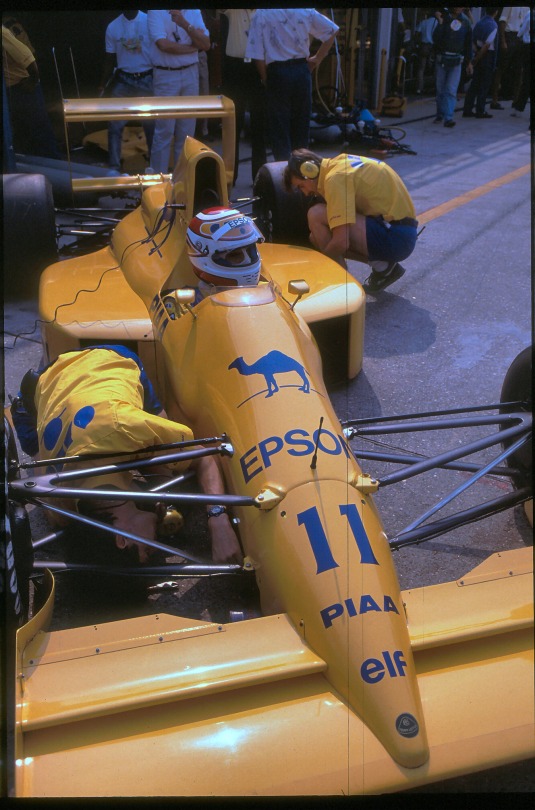


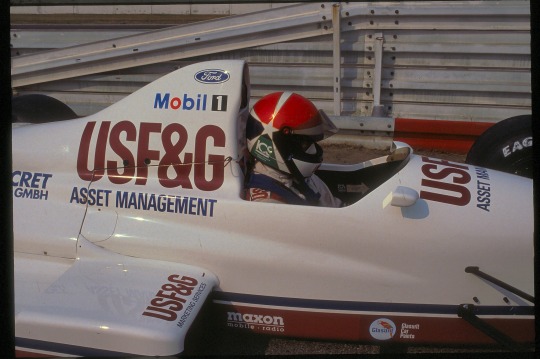

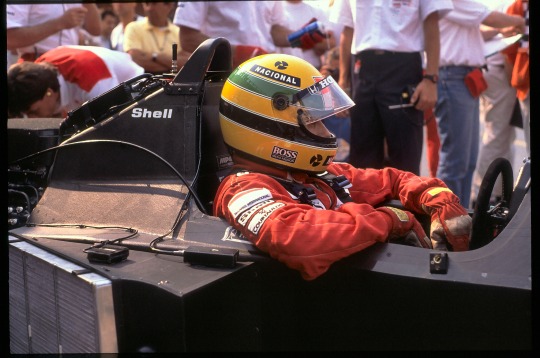




The 1989 German Grand Prix, otherwise officially known as the LI Mobil 1 Großer Preis von Deutschland, was the ninth round of the 1989 FIA Formula One World Championship, staged at the Hockenheimring in Baden-Württemberg, West Germany, on the 30 July 1989. The race would see Ayrton Senna lead home a dominant one-two for McLaren-Honda, after a gearbox issue for team-mate Alain Prost two laps before finish handed him victory.
The old super fast Hockenheimring was a perfect natural dyno. 1986 turbo cars with unrestricted boost were long considered the most powerful F1 cars ever. But the 1989 naturally aspirated cars came immediately very close to them (lap time-wise). Let's compare the pole position lap times at Hockenheimring form 1986 to 1991:
1986 1:42.013 (Saturday Q2, Rosberg, Mclaren MP4/2C, TAG-Porsche 1,499 cc V6, turbo) 1,350+ hp at 5.5 bar (unlimited) boost (79.7 psi) during qualifying, 195 litre limit for turbos
1987 1:42.616 (Friday Q1, Mansell, Williams FW11B, Honda RA167-E 1.5 L V6 turbo) turbos had to feature a pop-off valve which restricted boost to 4.0 bar, 195 litre limit for turbos
1988 1:44.596 (Friday Q1, Senna, Mclaren MP4/4, Honda RA168-E, 1.5 L V6 turbo) turbo boost further reduced to only 2.5 bar, 150 litre limit for turbos
1989 1:42.300 (Friday Q1, Senna, Mclaren MP4/5, Honda RA109-E, 3,490 cc V10), 3.5 litre normally aspirated, turbochargers banned
1990 1:40.198 (Friday Q1, Senna, Mclaren MP4/5B, Honda RA100-E, 3,490 cc V10), 3.5 litre normally aspirated, turbochargers banned
1991 1:37.087 (Saturday Q2, Mansell, Williams FW14, Renault RS3C, 3,493 cc V10), 3.5 litre normally aspirated, turbochargers banned
The speed of development of F1 cars for that period was incredible. In 1992 the layout of the circuit was changed.
#formula 1#ayrton senna#alain prost#f1#grand prix#1989#germany#hockenheimring#mclaren#williams#lotus
40 notes
·
View notes
Text
Events 9.5
917 – Liu Yan declares himself emperor, establishing the Southern Han state in southern China, at his capital of Panyu.
1590 – Alexander Farnese's army forces Henry IV of France to lift the siege of Paris.
1661 – Fall of Nicolas Fouquet: Louis XIV's Superintendent of Finances is arrested in Nantes by D'Artagnan, captain of the king's musketeers.
1666 – Great Fire of London ends: Ten thousand buildings, including Old St Paul's Cathedral, are destroyed, but only six people are known to have died.
1697 – War of the Grand Alliance : A French warship commanded by Captain Pierre Le Moyne d'Iberville defeated an English squadron at the Battle of Hudson's Bay.
1698 – In an effort to Westernize his nobility, Tsar Peter I of Russia imposes a tax on beards for all men except the clergy and peasantry.
1725 – Wedding of Louis XV and Maria Leszczyńska.
1774 – First Continental Congress assembles in Philadelphia.
1781 – Battle of the Chesapeake in the American Revolutionary War: The British Navy is repelled by the French Navy, contributing to the British surrender at Yorktown.
1791 – Olympe de Gouges writes the Declaration of the Rights of Woman and of the Female Citizen.
1793 – French Revolution: The French National Convention initiates the Reign of Terror.
1798 – Conscription is made mandatory in France by the Jourdan law.
1812 – War of 1812: The Siege of Fort Wayne begins when Chief Winamac's forces attack two soldiers returning from the fort's outhouses.
1816 – Louis XVIII has to dissolve the Chambre introuvable ("Unobtainable Chamber").
1836 – Sam Houston is elected as the first president of the Republic of Texas.
1839 – The United Kingdom declares war on the Qing dynasty of China.
1862 – American Civil War: The Army of Northern Virginia crosses the Potomac River at White's Ford in the Maryland Campaign.
1877 – American Indian Wars: Oglala Sioux chief Crazy Horse is bayoneted by a United States soldier after resisting confinement in a guardhouse at Fort Robinson in Nebraska.
1882 – The first United States Labor Day parade is held in New York City.
1887 – A fire at the Theatre Royal, Exeter, kills 186.
1905 – Russo-Japanese War: In New Hampshire, United States, the Treaty of Portsmouth, mediated by U.S. President Theodore Roosevelt, ends the war.
1914 – World War I: First Battle of the Marne begins. Northeast of Paris, the French attack and defeat German forces who are advancing on the capital.
1915 – The pacifist Zimmerwald Conference begins.
1932 – The French Upper Volta is broken apart between Ivory Coast, French Sudan, and Niger.
1937 – Spanish Civil War: Llanes falls to the Nationalists following a one-day siege.
1938 – Chile: A group of youths affiliated with the fascist National Socialist Movement of Chile are executed after surrendering during a failed coup.
1941 – Whole territory of Estonia is occupied by Nazi Germany.
1942 – World War II: Japanese high command orders withdrawal at Milne Bay, the first major Japanese defeat in land warfare during the Pacific War.
1943 – World War II: The 503rd Parachute Infantry Regiment lands and occupies Lae Nadzab Airport, near Lae in the Salamaua–Lae campaign.
1944 – Belgium, Netherlands and Luxembourg constitute Benelux.
1945 – Cold War: Igor Gouzenko, a Soviet Union embassy clerk, defects to Canada, exposing Soviet espionage in North America, signalling the beginning of the Cold War.
1945 – Iva Toguri D'Aquino, a Japanese American suspected of being wartime radio propagandist Tokyo Rose, is arrested in Yokohama.
1948 – In France, Robert Schuman becomes President of the Council while being Foreign minister; as such, he is the negotiator of the major treaties of the end of World War II.
1954 – KLM Flight 633 crashes into the River Shannon immediately after takeoff in Ireland, killing 28 people onboard.
1957 – Cuban Revolution: Fulgencio Batista bombs the revolt in Cienfuegos.
1960 – Poet Léopold Sédar Senghor is the first elected President of Senegal.
1960 – Muhammad Ali (then known as Cassius Clay) wins the gold medal in the light heavyweight boxing competition at the Olympic Games in Rome.
1969 – My Lai Massacre: U.S. Army Lieutenant William Calley is charged with six specifications of premeditated murder for the death of 109 Vietnamese civilians in My Lai.
1970 – Vietnam War: Operation Jefferson Glenn begins: The United States 101st Airborne Division and the South Vietnamese 1st Infantry Division initiate a new operation in Thừa Thiên–Huế Province.
1970 – Jochen Rindt becomes the only driver to posthumously win the Formula One World Drivers' Championship (in 1970), after being killed in practice for the Italian Grand Prix.
1972 – Munich massacre: A Palestinian terrorist group called "Black September" attacks and takes hostage 11 Israeli athletes at the Munich Olympic Games. Two die in the attack and nine are murdered the following day.
1975 – Sacramento, California: Lynette Fromme attempts to assassinate U.S. President Gerald Ford.
1977 – Voyager Program: NASA launches the Voyager 1 spacecraft.
1978 – Camp David Accords: Menachem Begin and Anwar Sadat begin peace discussions at Camp David, Maryland.
1980 – The Gotthard Road Tunnel opens in Switzerland as the world's longest highway tunnel at 10.14 miles (16.32 km) stretching from Göschenen to Airolo.
1984 – STS-41-D: The Space Shuttle Discovery lands after its maiden voyage.
1984 – Western Australia becomes the last Australian state to abolish capital punishment.
1986 – Pan Am Flight 73 from Mumbai, India with 358 people on board is hijacked at Karachi International Airport.
1990 – Sri Lankan Civil War: Sri Lankan Army soldiers slaughter 158 civilians.
1991 – The current international treaty defending indigenous peoples, Indigenous and Tribal Peoples Convention, 1989, comes into force.
1996 – Hurricane Fran makes landfall near Cape Fear, North Carolina as a Category 3 storm with 115 mph sustained winds. Fran caused over $3 billion in damage and killed 27 people.
2012 – An accidental explosion at a Turkish Army ammunition store in Afyon, western Turkey kills 25 soldiers and wounds four others.
1 note
·
View note
Text
Two-time grand prix winner Tambay dies aged 73 | 2022 F1 season
Two-time grand prix winner Patrick Tambay, who replaced Gilles Villeneuve at Ferrari in 1982, has died, his family announced on Sunday.
The French former Formula 1 and sportscar racer Tambay had lived with Parkinson’s disease in the later years of his life but died over the weekend aged 73.
Tambay raced in Formula 1 between 1977 and 1986 in a career that spanned 114 grand prix starts from 123 races entered. After making his early grand prix starts with Surtees and Theodore in 1977, Tambay was signed by McLaren for the 1978 and 1979 seasons before missing out the 1980 season.
Tambay returned to Formula 1 with Theodore for 1981 but disappeared from the grid again in 1982. However, following the sudden death of Ferrari driver Gilles Villeneuve in practice for the 1982 Belgian Grand Prix, Ferrari called in Tambay to step into Villeneuve’s vacant seat.
Four races later, he secured victory in the German Grand Prix and two more podiums, earning a drive alongside fellow Frenchman Rene Arnoux for 1983. Tambay took an emotional second career win at the San Marino Grand Prix in Imola, but was ultimately replaced by Michele Alboreto at Ferrari for 1984.
Tambay moved to Renault for the next two seasons, taking three podium finishes and one pole position. His final season in F1 came with Haas (founded by Carl Haas) in 1986. After his racing career, Tambay picked up a microphone to commentate on Formula 1 for French television.
Formula 1 CEO Stefano Domenicali paid tribute to Tambay upon his death, saying he was “saddened” by news of the former driver’s passing.
“He was a great talent and ambassador for Formula 1 throughout his life,” Domenicali said. “We will all miss him deeply and our thoughts and prayers are with his family and friends at this sad time.”
Advert | Become a RaceFans supporter and go ad-free
2022 F1 season
Browse all 2022 F1 season articles
via RaceFans - Independent Motorsport Coverage https://www.racefans.net/
3 notes
·
View notes
Photo

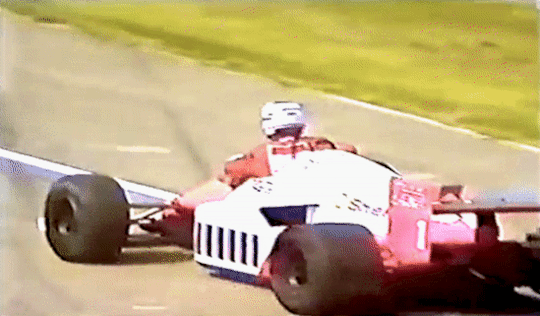

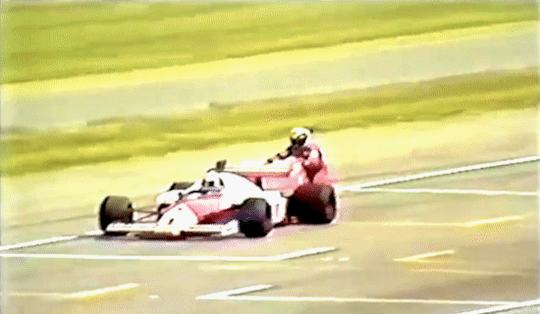


Alain Prost | German Grand Prix, 1986
Alain Prost's McLaren ran out of fuel on the last lap on the finishing straight. To the applause of the crowd, Prost got out of his car and tried to push it over the line. He failed to make it over but still earned a point for sixth place.
43 notes
·
View notes
Text
Tema Da Vitoria Ayrton Senna Download Mp3

Far cry 4 extreme injector v3.exe. Download new version of Extreme Injector v3.7. Extreme Injector Home Download. For example, in the case of Far Cry 4 it is called farcry4.exe.
Download Software Pedaleando En La Oscuridad Pdf Dark Phoenix Flowers Patchouli Rar Tema Da Vitoria Ayrton Senna Download Mp3 Exe To Autoit Script Converter Download Computer Oriented Numerical Methods(pu) Pdf Realterm Serial Capture Program Download Aurora 3d Animation Maker Keygen Oblivion Gold Cheat Post Patch. Blogscelestial.netlify.com › Tema Da Vitoria Ayrton Senna Download Mp3 Jump to navigationJump to search 9, Tema Da Vitoria (Tribute A Um Campeao). 10, Goodbye My Friend. 11, In Your Eyes. 12, Angel., 3:59, $0.99. Tema Da Vitoria Ayrton Senna Download Mp3 Aiohow.org is Media search engine and does not host any files, No media files are indexed hosted cached or stored on our server, They are located on soundcloud and Youtube, We only help you to search the link source to the other server. Tema vitoria ayrton senna download Integrated Ac97 Audio Drivers For Mac Belajar Muqaddam Pdf Descargar Libro Postiaux Pdf Ayrton Senna da Silva, March 21, 1960 – May 1, 1994) was a Brazilian racing driver and triple.
Most Popular Pages. Crack Mio Moov M410; Chander Pahar Movie; Saints Row 2 Lag Fix Patch; Tema Da Vitoria Ayrton Senna Download Mp3; Onesafe Pc Cleaner License Key.

Jump to navigationJump to search
Victory Theme (Portuguese: Tema da Vitória) is a Brazilian instrumental song composed specially for the broadcast of Formula One by Rede Globo. The music was composed by Eduardo Souto Neto.
Duration: 05:23 - Source: soundcloud - FileType: mp3 - Bitrate: ~320 Kbps. Play download. Funk Ayrton Senna Tema da vitoria Prod DJPGJAY Brazil Duration:.
History(edit)
Tema Da Vitoria Ayrton Senna Download Mp3 Player
The song was suggested by Aloysio Legey,(1) the director of Formula One transmissions for Rede Globo. The song was recorded in 1981 by the Brazilian band Roupa Nova, to be used as the soundtrack of victories in the Brazilian Grand Prix, regardless of the winner's nationality, transmitted by Rede Globo. The song was first performed with the victory of Nelson Piquet in the 1983 Brazilian Grand Prix. The next year, the song was performed for Alain Prost's victory in the 1984 Brazilian Grand Prix.
Ayrton Senna Wikipedia
It was only in 1986 that the song started to be used for every victory by a Brazilian driver. The song marked Nelson Piquet's achievement of third championship in 1987 and Ayrton Senna's championships in 1988, 1990 and 1991.
For seven years the song wasn't played on Rede Globo due to the lack of victories by Brazilian drivers, between the 1993 Australian Grand Prix won by Ayrton Senna and the 2000 German Grand Prix won by Rubens Barrichello.
In 2006, the song was played the first time for Felipe Massa for his victory in the 2006 Turkish Grand Prix.
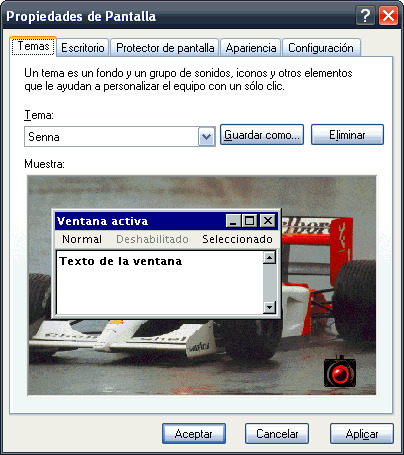
The Victory Theme was also played on Rede Globo after the Brazilian national team won the 1994 FIFA World Cup, as an homage to Ayrton Senna, who died earlier that year. and again in the 2002 FIFA World Cup, where Brazil won the World Cup trophy for the 5th time in Japan.
In 2009, the victory theme was played but with a different arrangement for Rubens Barrichellos's victory in the 2009 European Grand Prix, which marked Brazil's 100th victory in the history of Formula One.
At UFC 198, UFC Heavyweight Champion Fabricio Werdum used the song as his entrance music.
References(edit)
^Tele História - O dia em que o tema da vitória tocou para ProstArchived 2014-05-02 at the Wayback Machine
External links(edit)
GP Brasil 1983 – 1a Vez Tema da Vitória on YouTube
Tema da Vitória toca para Alain Prost on YouTube
Tema Da Vitoria Ayrton Senna Download Mp3 Download
Retrieved from 'https://en.wikipedia.org/w/index.php?title=Tema_da_Vitória&oldid=873200585'
Hidden categories:
blogscelestial.netlify.com › ▀ Tema Da Vitoria Ayrton Senna Download Mp3 ▀
Jump to navigationJump to search
9, Tema Da Vitoria (Tribute A Um Campeao). 10, Goodbye My Friend. 11, In Your Eyes. 12, Angel *, 3:59, $0.99. Buy MP3 Song. 13, On The Turning Away.
Victory Theme (Portuguese: Tema da Vitória) is a Brazilian instrumental song composed specially for the broadcast of Formula One by Rede Globo. The music was composed by Eduardo Souto Neto.
Tema Da Vitoria Ayrton Senna Download Mp3 Free
History(edit)
The song was suggested by Aloysio Legey,(1) the director of Formula One transmissions for Rede Globo. The song was recorded in 1981 by the Brazilian band Roupa Nova, to be used as the soundtrack of victories in the Brazilian Grand Prix, regardless of the winner's nationality, transmitted by Rede Globo. The song was first performed with the victory of Nelson Piquet in the 1983 Brazilian Grand Prix. The next year, the song was performed for Alain Prost's victory in the 1984 Brazilian Grand Prix.
Total overdose full save game files. It was only in 1986 that the song started to be used for every victory by a Brazilian driver. The song marked Nelson Piquet's achievement of third championship in 1987 and Ayrton Senna's championships in 1988, 1990 and 1991.
For seven years the song wasn't played on Rede Globo due to the lack of victories by Brazilian drivers, between the 1993 Australian Grand Prix won by Ayrton Senna and the 2000 German Grand Prix won by Rubens Barrichello.
In 2006, the song was played the first time for Felipe Massa for his victory in the 2006 Turkish Grand Prix.
The Victory Theme was also played on Rede Globo after the Brazilian national team won the 1994 FIFA World Cup, as an homage to Ayrton Senna, who died earlier that year. and again in the 2002 FIFA World Cup, where Brazil won the World Cup trophy for the 5th time in Japan.
Tema Da Vitoria Ayrton Senna Download Mp3 Gratis
Potty racers 4. In 2009, the victory theme was played but with a different arrangement for Rubens Barrichellos's victory in the 2009 European Grand Prix, which marked Brazil's 100th victory in the history of Formula One.
At UFC 198, UFC Heavyweight Champion Fabricio Werdum used the song as his entrance music.
References(edit)
^Tele História - O dia em que o tema da vitória tocou para ProstArchived 2014-05-02 at the Wayback Machine
External links(edit)
GP Brasil 1983 – 1a Vez Tema da Vitória on YouTube
Tema da Vitória toca para Alain Prost on YouTube
Retrieved from 'https://en.wikipedia.org/w/index.php?title=Tema_da_Vitória&oldid=873200585'
Hidden categories:

0 notes
Text
“This track has always been very good to me” – Mick Schumacher

Uralkali Haas F1 Team rookies Mick Schumacher and Nikita Mazepin, go into their final round of the season at the Hungarian Grand Prix before the summer break.
The venue for this weekend is of course the Hungaroring which has featured on the FIA Formula One World Championship calendar for the past thirty-five years, dating back to 1986.
The circuit holds many special memories for Schumacher, who in 2019 claimed his first ever Formula 2 win at the venue. Victory is certainly off the cards this weekend for the young German who will be doing all he can to qualify and finish as high as possible.
“This track has always been very good to me, I’ve always had a very nice experience. There are great fans but also the results were not always that bad. It’s a track that I always look forward to, and it always concludes a chapter as it’s the race just before the summer break, so for everyone it’s a nice time to come together and then everybody gets to have some time off.
“It’s a great track – it’s a dominant qualifying track – so usually where you qualify is usually where you start and where you end the race, mainly because there’s a lack of straights but also because DRS isn’t as effective, but it’s a great track to drive. It has a nice flow to it and usually it’s quite warm which is nice.
This weekend is also the final round before the summer break, an important time for all involved in Formula 1 to relax.
“For me personally, I would like to keep on racing as that’s where I enjoy being but on the other hand, I also think for everybody in Formula 1 – because those days are long days. It’s not a 9-5 job, they’re hard and long days that we have to endure. For everyone involved I think it’s a good thing that we get two weeks off to be able to not open laptops, not look at phones and just relax and have some time off.
“For sure I will do the same to be able to come back even stronger at the end of the summer break and really attack going into the triple-header of Spa, Zandvoort and Monza – straight away back into business.”
“Hungaroring is a cool place to be at” – Nikita Mazepin
The Hungaroring has also been a happy hunting ground for Mazepin, the Russian claimed victory at the circuit in 2018 whilst racing in GP3. Like his team-mate, Mazepin likes the circuit and is hoping the team can make the most of the weekend.
“Hungaroring is a cool place to be at. It’s normally very hot so it’s quite physically demanding but after it’s been resurfaced a few years back, this track provides a lot of grippy conditions with the new tarmac and I’ve always enjoyed driving there, although racing there might be a little difficult.
“The realistic target for the team is to try and maximize our performance in Hungaroring. This track does need a lot of downforce and grip because there’s a lot of high-speed corners. There, the minimal speed is the key so we will try to maximise what we’ve got.”

Credit: Mark Sutton / LAT Images
Read the full article
0 notes
Link
One of the most iconic filmmakers of all time, Andrei Tarkovsky was known for his philosophical themes and lazily-paced long takes, among other memorable tropes. All through his career, the Russian auteur had experimented with several genres, ranging from sci-fi (Stalker, Solaris) to war drama (Ivan's Childhood).
RELATED: Andrey Zvyagintsev & 9 Other Modern Russian Directors Every Movie Fan Should Check Out
His approach towards filmmaking lay heavy emphasis on 'sculpting in time' as Tarkovsky believed that a major motive of cinema is to alter the notions of time. With minimal cuts and long takes, his films succeeded at not looking like different shots arranged in one sequence. Rather, his narratives convey the idea of the passage of time in a seemingly realistic rhythm.
10 There Will Be No Leave Today (1959) - 6.5

Back in the late 1950s, film students Aleksandr Gordon and Andrei Tarkovsky directed this 47-minute-long war drama that recounted an actual incident from Russian history. There Will Be No Leave Today is set in a small Russian town that faces the threat of unexploded bombs from the Second World War. Hence, an army unit is tasked with evacuating the town and safely detonating these bombs.
After being broadcast on Soviet TV in 1959, the student film was then recovered in the 1990s. It offers an early glimpse at Tarkovsky's budding talent at showcasing human emotions and building atmospheric tension.
9 Voyage In Time (1983) - 7.3
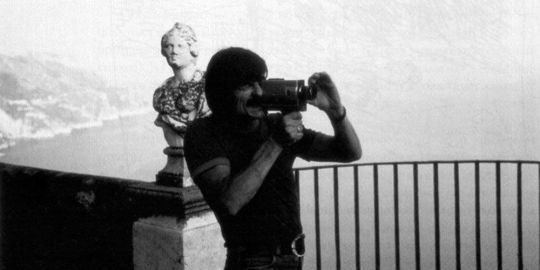
The only documentary directed by Tarkovsky, Voyage in Time focused on his travels in Italy with screenwriter/co-director Tonino Guerra as they prepared to shoot the former's drama feature Nostalghia.
Voyage In Time serves as an interesting peek into Tarkovsky's psyche as a filmmaker and as a person as he and Guerra delve into philosophical matters among their usual conversations on cinema. Further, the director also touches upon his other influences that include Federico Fellini, Jean Vigo, and several others.
8 The Steamroller And The Violin (1961) - 7.4

The Steamroller And The Violin was Tarkovsky's third diploma film during his student days at State Institute of Cinematography, Moscow. It happens to one of his most emotion-driven films as it explores the friendship between a young violinist (Igor Fomchenko) and an aging steamroller operator (Vladimir Zamansky).
RELATED: 10 Soviet Classic Films That Made An Impact On World Cinema
Facing a general sense of isolation from society, both friends spend their evenings talking to each other about their day-to-day activities. While the boy usually plays his violin, the old man delves into his past telling his friend stories from the War.
7 Mirror (1975) - 8.1
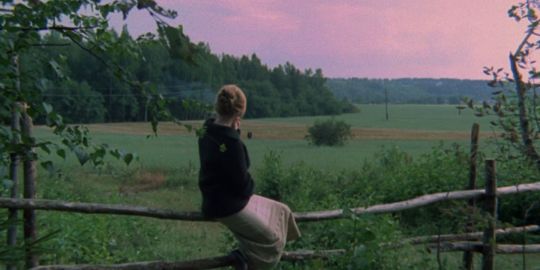
For some cinephiles, Mirror would possibly be Tarkovsky's most enigmatic film largely due to its free-flowing non-linear structure and a sense of storytelling that would resemble the 'stream of consciousness' style of writing (popularized by James Joyce and Virginia Woolf).
In its essence, the film recalls a dying poet's final days as he remembers his life and remnants of Soviet history and society. There's a lot to interpret in Mirror easily making it a film worth multiple viewings. While Tarkovsky authored the screenplay, the film heavily incorporates poems written and recited by his father Arseny Tarkovsky.
6 Solaris (1972) - 8.1
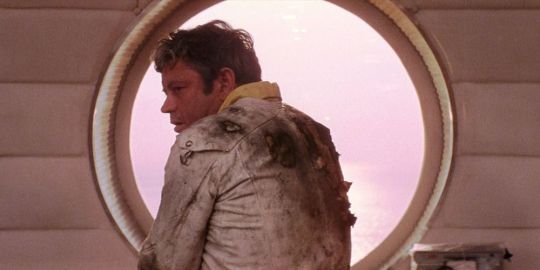
Solaris, along with classics like 2001: A Space Odyssey, can largely be credited in ushering in an age of introspective, thoughtful space sci-fi that focused on human themes rather than just a fascination for the extraterrestrial. Solaris revolves around a space station inhabited by a crew displaying bizarre emotional traits, that are further analyzed by psychologist Kris Kelvin (Donatas Banionis) when he arrives at the station.
RELATED: 10 Sci-Fi Movies That Only Make Sense On A Rewatch
Solaris won the Grand Prix at Cannes and established Tarkovsky as a visionary in sci-fi cinema. Many of his ideas would be further explored in Stalker.
5 Stalker (1979) - 8.1
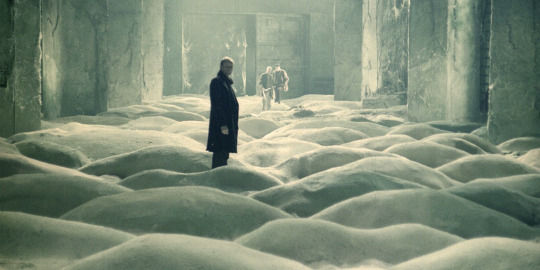
Just like Solaris, Stalker is a sci-fi tale rooted in philosophical questions. Even though it drew mixed reviews initially, it is yet again regarded as one of the finest sci-fi films today.
Alexander Kaidanovsky plays the ominous 'Stalker,' a man entrusted with transporting people to the 'Zone.' This so-called 'Zone' is a region where anyone's innermost desires can be fulfilled. Despite its thoughtful musings, the film also brims with a thriller-like aura that would keep audiences guessing about the actual nature of the grim, distant future of Stalker.
4 Andrei Rublev (1966) - 8.1
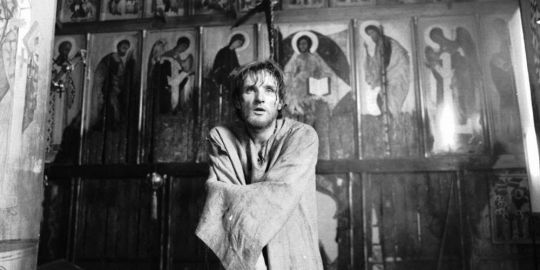
Even though Andrei Rublev is set in medieval Russia, its dominant theme of artistic freedom is very much relevant in present times. The titular personality (Anatoly Solonitsyn) is an iconographer who opposes an oppressive regime while pursuing his art. For its direct jabs at authoritarian states all over the world, Andrei Rublev either faced censorship or a total ban in its initial run.
RELATED: 10 Best Movies About Famous Artists, According To IMDb
Apart from serving as a fictionalized biopic of its protagonist, Tarkovsky's sophomore feature film was a bold case study of Russian society in the fifteenth century, an era characterized by religious power struggles and the eventual transition to Tsardom.
3 The Sacrifice (1986) - 8.1

Offret aka The Sacrifice was Tarkovsky's final directorial effort before he succumbed to terminal lung cancer. The film can be described as magical realism at its finest as it centers around a heavily nuanced take on humanity and religion. In order to stop an impending nuclear holocaust, an intellectual attempts to negotiate with God, a deal that would require a 'sacrifice.'
Opening to rave reviews, the Swedish-language film earned Tarkovsky his second Grand Prix at Cannes along with a BAFTA for Best Film Not In The English Language.
2 Nostalghia (1982) - 8.1

Nostalghia (alternatively released as Nostalgia) was Tarkovsky's first film shot outside the Soviet Union, incorporating some of his own notions of homesickness. It stars Oleg Yankovsky as a writer studying the life of a Russian composer who spent his final days in Italy. While exploring the Italian countryside, he himself goes through bouts of isolation and displacement.
The autobiographical nature in Nostalghia is clear to see with the narrative further adorned with memorable Tarkovsky elements like dream sequences and a hopeless protagonist.
1 Ivan's Childhood (1962) - 8.1

Barring his student films, Ivan's Childhood marked Andrei Tarkovsky's full-fledged directorial debut, going down in cinematic history as one of the best first films ever.
The movie endures as a brilliant example of expressing the human cost of war as it studies wartime trauma from the eyes of an orphaned boy Ivan (Nikolai Burlyayev). Losing his parents to German forces, Ivan struggles to survive as the Second World War rages on affecting both sides of the conflict. A hard-hitting feature, it boldly proclaimed its director's anti-war sentiments.
NEXT: The 10 Best World War II Epics, Ranked
Top 10 Andrei Tarkovsky Movies, According To IMDb | ScreenRant from https://ift.tt/3fSdXNo
1 note
·
View note
Photo
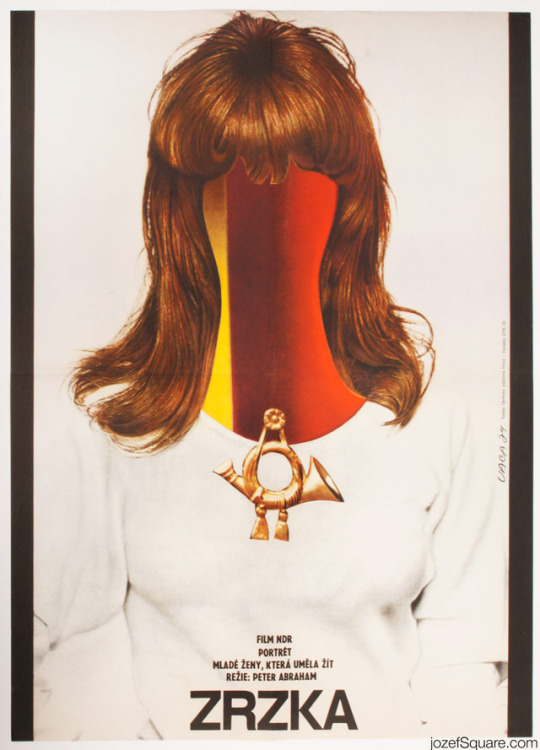
(via Movie Poster - Redhead, Karel Vaca, 1974)
Mysterious surreal poster collage by Karel Vaca.
title: Redhead (unofficial) | East German, 1979
director: Manfred Mosblech
with: Angelika Waller, Jürgen Zartmann, Norbert Christian
poster design: Karel Vaca, 1974
***
Karel Vaca‘s unique aesthetics and creative freedom made him one of the most influential Czech graphic designers. He studied at the Rotter’s school of Advertising Graphics and at the School of Applied Art in Prague. Karel Vaca’s extensive portfolio includes over 289 movie poster designs.
Award Winning Posters by Karel Vaca:
1964 2nd Prize, Film Festival Karlovy Vary (Dolce Vita / Accused)
1977 Special Prize, The Hollywood Reporter (The White Odyssey)
1980 Grand Prix, IFF Chicago (National Class Cat. up to 785 ccm)
1982 3rd Prize, The Hollywood Reporter (Don’t Call Me Major)
1984 Silver Medal, IFF Chicago (For 200 Grand, You Get Nothing Now)
1986 Diploma, Biennale Lahti
1988 The Best Poster of the Year, Honourable Mention (The Great Film Robbery)
For poster shop and blog highlights please subscribe to our daily or weekly newsletter: http://eepurl.com/RvXo9 (25% OFF for Students)
25 notes
·
View notes